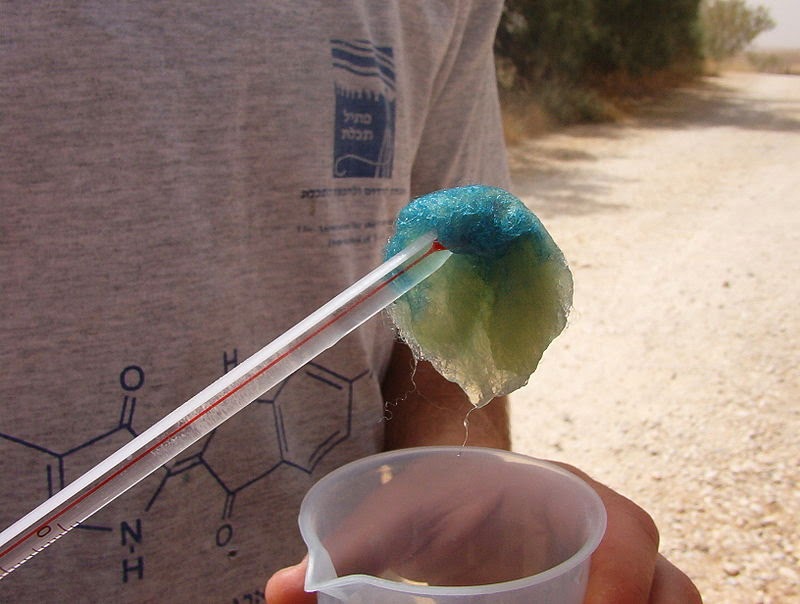 |
|
Lapis lazuli eyes in the 25th century BCE Statue of Ebih-II (eastern Syria).
|
Today’s misinformationcomes from the same fount that gave us yesterday’s‘four-coned woman.” It’s the idea that the ancients were somehow ignorant of the color blue, as evidenced by the fact that Homer called the ocean the “wine-dark sea.”
 |
|
Fragment of a fresco from the Bronze Age Palace at Knossos. The blue is kyanos (from which comes our word cyan), a soda/copper frit paste.
|
Calcium copper silicate was the first synthetic pigment, dating from the Egyptian 4th Dynasty (c. 2575–2467 BCE). Although no Egyptian texts lay out its exact manufacturing process, Vitruvius gave us a formula in his De architectura (c. 15 BCE).
The Egyptians synthesized Egyptian blue because their primary blue pigment, lapis lazuli, could only be found in Afghanistan and therefore was rare and expensive. Lapis has been mined since the 7th millennium BCE, making it one of the oldest known human endeavors.
 |
|
Carthaginian glass head pendant with cobalt blue hair and eyes, 5th-4th century BCE. Cobalt is another pigment used since antiquity.
|
By the fourth millennium BCE, the Egyptians already had an established sea and caravan trade network. The Uluburun shipwrecktells us conclusively that the Egyptians were trading blue glass ingots with the Greeks by the late 14th century BC, long before Homer lived.
Lapis lazuli’s name derives in part from lāžaward, which is simply the name of the mineral in Persian. From it comes the English word azure, French azur, Italian azzurro, Polish lazur, Romanian azur and azuriu, Portuguese and Spanish azul, and Hungarian azúr. It doesn’t take an etymologist to realize that all these European words come from a common root, one that meant ‘blue’ to its users.
|
Egyptian blue pyxis, imported to Italy from northern Syria, c 750-700 BCE.
|
It isn’t a Roman root. The Romans called that blue color caeruleus, deriving from caelum, meaning heaven or sky. The Greeks had a word for blue: kyanos, which comes down to us as cyan. And, yes, the ancient Israelites had a word for blue: tekhelet. This refers to a dye made from a now-unknown marine creature.
On the other hand, the word blue in English derives from a Proto-Germanic word that meant pale, pallid, wan, blue, blue-grey, yellow, discolored and light in color. That is as good a description of the northern sky as anything.
So what was Homer—whoever he was—talking about with his references to the “wine-dark sea”? I’ve asked this question before, and my conclusion is that he is speaking of the roiled, opaque, impenetrable ocean.
 |
|
King Tut’s burial mask (1346 BCE) has lapis lazuli eyelashes, imported from Afghanistan.
|
Some people have absolutely no poetry in their souls.
Let me know if you’re interested in painting with me on the Schoodic Peninsula in beautiful Acadia National Park in 2015 or Rochester at any time. Click here for more information on my Maine workshops! Download a brochure here.

